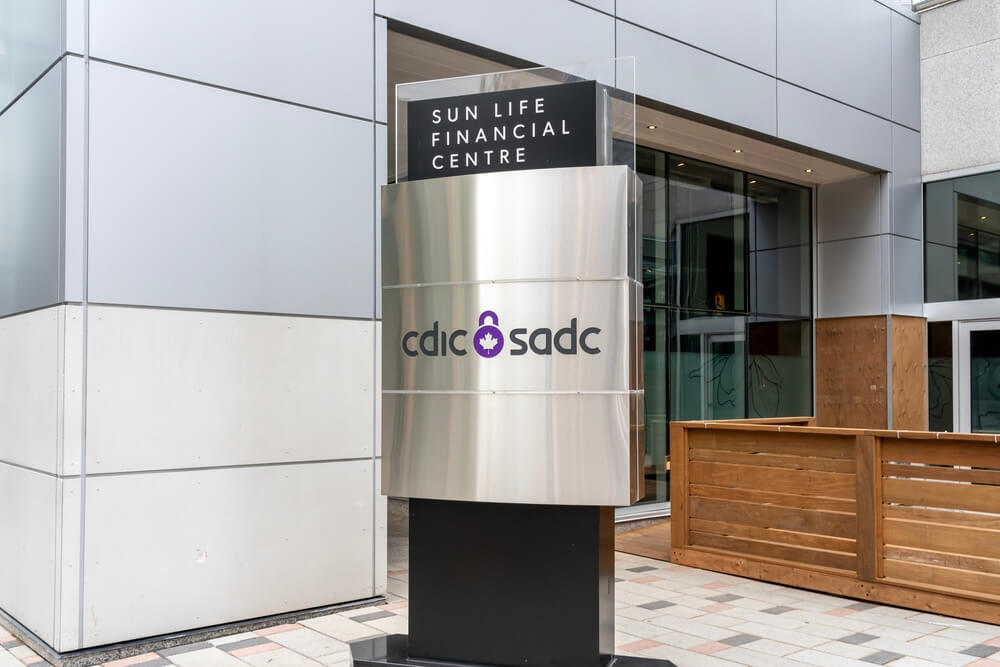
Canada Deposit Insurance Corporation
Canada is the world’s 39th most populous country and one of the most vibrant economies. With such stats, a bank crash in the country could easily harm millions of Canadians. Even recently, talks about how banks were running out of $50 bills due to COVID-related over withdrawal reached news headlines. However, even in such extreme scenarios, you could have a fallback option in the Canada Deposit Insurance Corporation (CDIC).
The CDIC is a Crown Corporation that came into existence in 1967. The Canada Deposit Insurance Corporation Act and Schedule III, Part 1 of the Financial Administration Act promoted its creation. Parliament created it to make sure Canadian commercial bank and savings institution depositors could access insurance. Since the corporation’s inception, there were 43 instances of financial institutions failing. All of the institutions were CDIC members.
As for the entity’s history, its roots go even further back than the date it started operating. During the 19th century, Upper Canada had severe financial issues, followed shortly by the North American Panic, causing a widespread economic depression. Trouble continued post-WWI, with Toronto’s Home Bank failing. With cases of financial difficulty being so common, it was apparent that a security net was necessary.
So when the CDIC was founded, it offered $20,000 per eligible deposit account. Naturally, that number went up throughout the years, reaching $60,000 in 1983, and $100,000 in 2005, which is where it sits today. Luckily, the corporation hasn’t needed to provide any compensation in a while, as the last financial institution crash occurred in 1996.
CDIC’s Coverage
To receive the coverage that the CDIC provides, your bank needs to be a member of the institution. If it is, the corporation covers savings and chequing accounts, Guaranteed Investment Certificates (GICs) and other term deposits, and foreign currency. Under the blanket of these three, there are seven eligible deposit categories that the CDIC covers:
- in an RRSP
- in an RRIF
- through a TFSA
- in trust
- for paying taxes on mortgaged properties
- in one name
- in more than one name
Now, you might’ve thought the safety amount of $100,000 was a bit on the low side. After all, if you’re financially responsible with a stable job, there’s a good chance your savings would go over that during your lifetime. Well, luckily, depositors can get far more than a flat $100,000, as each of the seven categories can get you back that sum.
It’s worth noting that most credit unions, including Quebec’s and New Brunswick’s caisses populaires, aren’t insured federally. However, that shouldn’t be a huge concern, as provincial insurance corporations cover them. The corporations usually closely resemble the model CDIC put in place.
Another crucial piece of information about the CDIC is what it doesn’t cover. That group isn’t massive but could still make a difference to some potential depositors. The excluded categories are mutual funds, stocks and bonds, Exchange Traded Funds (ETFs), and Cryptocurrencies. So for broker-related services, you might get stranded with the CDIC, but other institutions, such as the CIPF, can assist you in such cases.
The CDIC’s payments are automatic, so depositors don’t need to worry about any technicalities hindering them. As per the corporation, you simply need to know what they do and don’t cover and keep your contact info updated.
Members of the CDIC
All the protection the CDIC provides won’t do you any good if you end up in a bank that isn’t a member. Luckily, those aren’t quite numerous, as the corporation’s Summary of the Corporate Plan, 2018/19 to 2022/2023, let us know there were 82 member institutions. The members include the Big Five banks, meaning TD, BMO, RBC, CIBC, and Scotiabank depositors are covered.
However, physical banks aren’t the only ones the CDIC provides security for. Namely, the corporation also ensures that users have protection when they use online-only services. So, for example, Alterna Bank and EQ bank can be found among the CDIC’s members.
A simple way of telling whether your chosen institution belongs to the CDIC is to look for its badge. Members will always display the CDIC badge on their websites, apps, and branches. However, if you’re worried about institutions faking their memberships, the CDIC also has a complete list of members on its website.
-
Support
-
Platform
-
Spread
-
Trading Instrument




